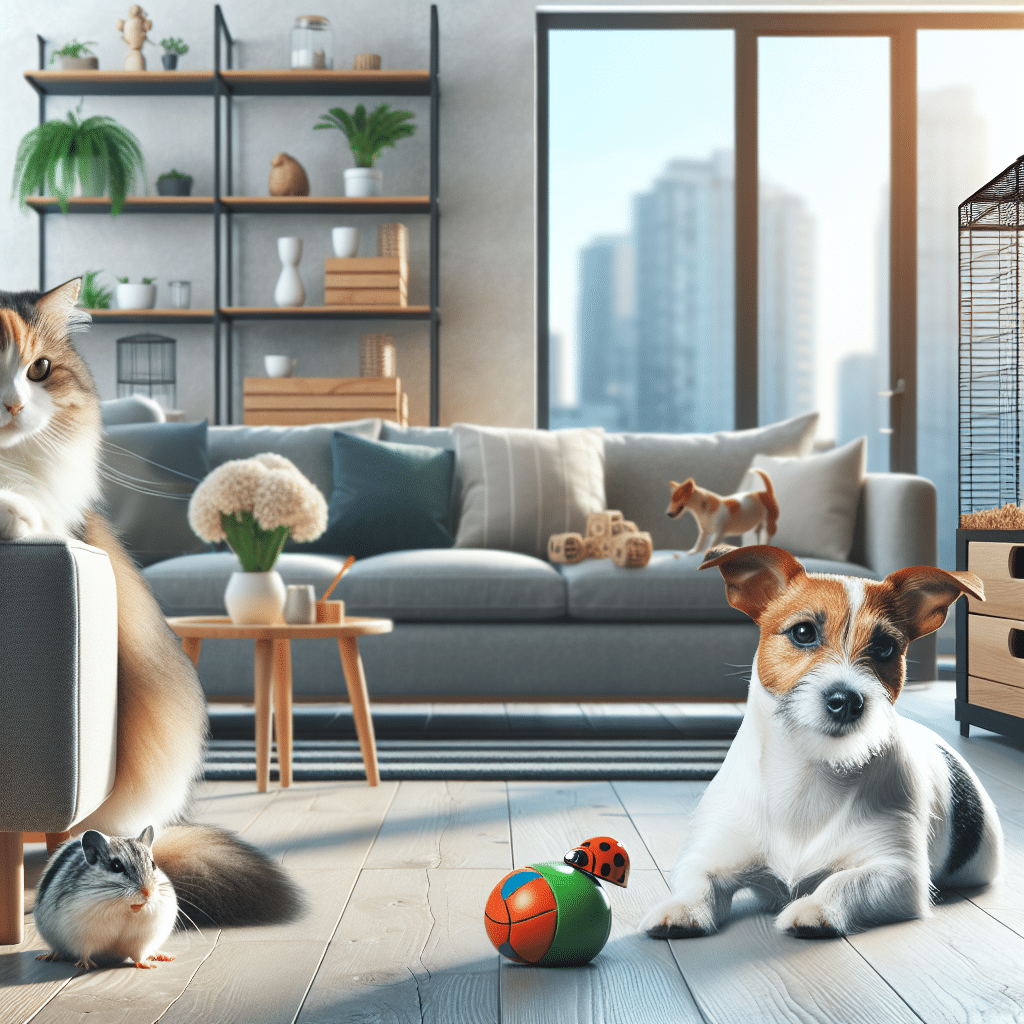Balancing Pet Activity with Apartment Living
Living in an apartment presents unique challenges for pet owners, especially when it comes to ensuring that their furry friends are adequately exercised. Cats and dogs need activity to remain healthy and happy, but confined spaces can complicate this need. Here’s a comprehensive guide detailing ways to balance pet activity while living in an apartment.
Understanding Your Pet’s Activity Needs
Differentiating Species and Breeds
First, it’s essential to recognize that different pets have varying activity requirements. For instance:
- Dogs: Generally, they need daily walks, playtime, and mental stimulation. High-energy breeds such as Border Collies or Retrievers require more vigorous exercise.
- Cats: Cats may be less demanding than dogs, but they also need stimulation. Indoor cats benefit from play to replicate hunting behaviors.
Age and Health Considerations
The activity level may also depend on the pet’s age and health. Young pets often have boundless energy, while older pets may need gentler exercises and more rest. Always consult with a veterinarian to tailor a suitable routine.
Indoor Activities
Interactive Toys
Interactive toys, such as puzzle feeders and treat-dispensing toys, engage pets mentally while providing physical activity. These toys encourage problem-solving and can keep pets occupied for extended periods.
Agility Games
Creating a mini agility course in your living room can be a fun way to keep dogs active. Use items like chairs, cardboard boxes, and cushions to create obstacles. Cats can also enjoy agility training with hurdles or tunnels, encouraging them to jump and climb.
Hide and Seek
A classic yet effective game is hide and seek. Hide and call your pet’s name. This simple game stimulates their mind and encourages movement.
Laser Pointers for Cats
For indoor cats, laser pointers can be an excellent way to stimulate play. However, it’s crucial not to overdo it and to end sessions with a tangible reward like a toy or treat.
Outdoor Activities
Daily Walks
Walking your dog daily is essential. For energetic breeds, consider multiple shorter walks instead of one long stroll. Utilize different routes to keep the experience stimulating.
Designated Dog Parks
Locate nearby dog parks and take advantage of these spaces. Dog parks allow for off-leash play, providing your pet with an opportunity to socialize and burn off energy.
Group Activities
Joining a pet group can offer a sense of community. Look for local meetups or dog training classes to combine exercise with socialization.
Utilizing Available Space
Balconies and Rooftops
If your apartment has a balcony or rooftop, consider setting up a safe, enclosed space for your pets. Secure netting can prevent pets from escaping while they enjoy fresh air and some sunshine.
Vertical Space for Cats
Cats love to climb. Adding vertical space, like cat trees or shelves, can enrich their environment and encourage them to exercise by climbing and exploring.
Shared Spaces
Make use of common areas in your apartment complex. If there’s a lawn or shared yard, use these spaces for outdoor playtime with your dog. Ensure your pet is leashed if required.
Scheduling and Routine
Regular Exercise
Create a consistent schedule for walks and playtime. Dogs thrive on routine, and stable schedules can help alleviate anxiety and behavioral issues.
Incorporating Training
Incorporate training sessions into daily routines. Teach your dog new tricks or commands in short, fun bursts. This not only enhances behavior but provides mental stimulation.
Timing for Exercise
Consider the best times for exercise based on your pet’s energy levels and your schedule. Early mornings or late evenings are often ideal for longer walks, especially in hotter climates.
Socialization Considerations
Doggie Playdates
Arranging playdates with other pets can be crucial for social skills, especially for dogs. Find friends with pets and alternately host playdates to give your dog a chance to engage and expend energy.
Cat Socialization
For cats, socialization may occur less actively. However, introducing them to other cats gradually can help them adapt and enjoy social interactions.
Managing Noise and Behavior
Consider Neighbors
Be mindful of noise, as barking or meowing can disturb neighbors. If your pet is prone to vocalization, consider training or investing in calming aids to manage energy levels.
Boredom Solutions
A bored pet is often a destructive one. Rotate toys and introduce new games regularly to keep them engaged and content. Providing access to live entertainment, such as bird feeders outside the window, is also beneficial for cats.
Health and Wellbeing
Regular Vet Visits
Regular veterinary check-ups can ensure your pet’s health, identifying any potential issues early. Vaccinations and regular flea treatments are essential for indoor pets too.
Diet and Nutrition
Monitor your pet’s nutritional needs as they relate to activity levels. A well-balanced diet tailored for their specific needs can significantly impact their energy levels and overall health.
Training and Behavior Management
Obedience Training
Invest time in obedience training, which can enhance your pet’s behavior in smaller spaces. A well-trained pet is often easier to manage in an apartment setting.
Behavior Adjustment
If you notice any behavioral issues stemming from living in an apartment, consult a professional animal behaviorist. They can offer specialized strategies to improve your pet’s comfort and activity level.
Final Tips
- Engage in Indoor Training Games: Simple games like fetch or tug-of-war can be played in limited space as long as you clear an area.
- Invest in Pet Cameras: Monitor your pet’s activity when you’re not home. This helps ensure they are comfortable and can guide you in adjusting their routine if necessary.
- Pet-Friendly Apartment Search: When looking for a new apartment, prioritize pet-friendly features. Consider options with nearby parks or open spaces to suit an active lifestyle.
Balancing pet activity with apartment living is achievable with creativity, commitment, and planning. Each pet is unique, so tailoring these suggestions to fit their specific needs will contribute to their happiness and well-being while maintaining harmony in your living space.
